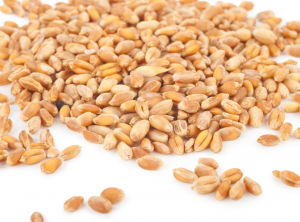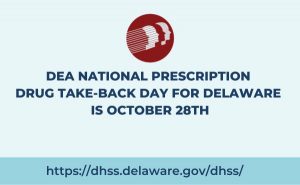DPH Releases Latest Cancer Incidence and Mortality Trends in Delaware – State of Delaware News
[ad_1]
News | Date Posted: Monday, October 16, 2023

According to the latest cancer data from the Delaware Department of Health and Social Services (DHSS), Division of Public Health (DPH), Delaware’s mortality rate continues to decline. Between 2006 and 2020, mortality rates for all-site cancer decreased an average of 1.8% per year in Delaware and decreased an average of 1.7% per year in the U.S. Delaware’s current ranking of 15th among the states for highest all-site cancer mortality is the same ranking as in the 2022 report, which examined the 2015-2019 time period. This represents considerable continued progress since the 1990s, when the state ranked second among the states for all-site cancer mortality.
DPH presented its data report, Cancer Incidence and Mortality in Delaware, 2016-2020, to the Delaware Cancer Consortium (DCC) on Monday. In this report, DPH compares Delaware’s cancer incidence and mortality statistics to those of the U.S. The COVID-19 pandemic resulted in delays and reductions in cancer screening and diagnosis, which subsequently led to a decline in 2020 incidence counts and rates that was considered an anomaly. Therefore, in this report, cancer incidence rates are compared for the period of 2006 to 2019. Cancer mortality rates are compared for the period of 2006 to 2020. A compendium report, Census Tract-Level Cancer Incidence in Delaware, 2016-2020, was also released which presents calculations and detailed maps with all-site cancer incidence rates by census tract.
“I want to thank the Delaware Cancer Consortium and the Division of Public Health for promoting prevention efforts and increasing access to screenings. The data in this Annual Report shows we are diagnosing cancer earlier and providing better access to care,” said Governor John Carney. “The earlier cancer is detected, the more treatable it is. Timely care also leads to better quality of life for cancer survivors. It’s important that Delawareans talk to their providers and get their recommended cancer screenings so that we can see health outcomes continue to improve year over year.”
Delaware’s 2016-2020 all-site cancer mortality rate (156.8 per 100,000 population) is higher than the U.S. rate (149.4 per 100,000 population).
- Delaware (17.6 per 100,000 population) has a lower prostate cancer mortality rate compared to the U.S. (18.8 per 100,000 population).
- Delaware (12.7 per 100,000 population) has a lower colorectal cancer mortality rate compared to the U.S. (13.1 per 100,000 population).
- Delaware (38.4 per 100,000 population) has a higher lung cancer mortality rate compared to the U.S. (35.0 per 100,000 population).
- Delaware (20.7 per 100,000 population) has a higher breast cancer mortality rate compared to the U.S. (19.6 per 100,000 population).
Between 2006 and 2020, mortality rates for all-site cancer decreased an average of 1.7% per year among non-Hispanic White males and decreased an average of 1.9% per year among non-Hispanic White females. Between 2005 and 2019, mortality rates for all-site cancer decreased an average of 2.1% per year among non-Hispanic Black males and remained stable for non-Hispanic Black females. Between 2005 and 2019, the trend in mortality rates for all-site cancer were stable among both Hispanic males and females.
Regarding cancer incidence, between 2006 and 2019, incidence rates for all-site cancer decreased an average of 1.1% per year in Delaware and an average of 0.6% per year in the U.S. While progress continues to be made, Delaware’s 2016-2020 all-site cancer incidence rate (457.6 per 100,000 population) remains higher than the comparable U.S. rate (442.2 per 100,000 population). Delaware currently ranks 20th among the states for highest all-site cancer incidence.
Between 2006 and 2019, incidence rates for all-site cancer decreased an average of 1.9% per year among non-Hispanic White males and remained stable for non-Hispanic White females. During that same period, incidence rates for all-site cancer decreased an average of 2.1% per year among non-Hispanic Black males and decreased an average of 1.1% per year among non-Hispanic Black females. Between 2006 and 2019, the trend in incidence rates for all-site cancer was stable among both Hispanic males and Hispanic females.
“Because we know early screening and prevention bring down cancer mortality rates, we want to ensure that every Delawarean – especially those facing economic, social and other obstacles to quality healthcare – has equal access to timely cancer preventative screenings, said DHSS Secretary Josette Manning. “Free cancer screenings are available to eligible Delawareans through the Screening for Life (SFL) Program.”
The top four cancers for incidence in Delaware are: female breast (134.5 per 100,000 population), prostate (125.0 per 100,000 population), lung and bronchus (56.9 per 100,000 population), and colorectal (34.6 per 100,000 population). The top four cancers for mortality in Delaware are: lung and bronchus (38.4 per 100,000 population), female breast (20.7 per 100,000 population), prostate (17.6 per 100,000 population) and colorectal (12.7 per 100,000 population). These are also the same trends in the U.S.
Among females, breast cancer had the highest incidence (134.5 per 100,000) and among males, prostate cancer had the highest incidence (125.0 per 100,000). Lung cancer is the leading cause of cancer death among males and females, with males (45.6 per 100,000) having a higher rate compared to females (32.8 per 100,000).
Non-Hispanic Black Delawareans are disproportionately more affected by breast, prostate and colorectal cancers compared to non-Hispanic White and Hispanic Delawareans:
- Non-Hispanic Black women (15.5 per 100,000 population) in Delaware have a higher mortality rate for breast cancer compared to non-Hispanic White women (11.2 per 100,000 population) in Delaware.
- Non-Hispanic Black men (12.6 per 100,000 population) in Delaware have a higher mortality rate for prostate cancer compared to non-Hispanic White men (6.7 per 100,000) in Delaware.
- Non-Hispanic Black Delawareans (14.9 per 100,000) have a higher mortality rate for colorectal cancer compared to non-Hispanic White (12.8 per 100,000 population) and Hispanic Delawareans (8.1 per 100,000 population).
- Non-Hispanic White Delawareans (40.5 per 100,000) have a higher mortality rate for lung cancer compared to non-Hispanic Black (37.1 per 100,000 population) and Hispanic Delawareans (18.1 per 100,000 population).
“DPH is committed to reducing disparities in cancer incidence and mortality by addressing the social determinants of health that contribute to them, said Interim DPH Director Steve Blessing. “We support eliminating transportation barriers to medical appointments, ensuring that education and training materials are socially and culturally appropriate, providing free preventative and treatment care, and identifying the most disadvantaged areas within the state for targeted outreach.”
RESOURCES
- In addition to cancer data, the Cancer Incidence and Mortality in Delaware, 2016-2020 report also include information about screening and historical data trends. The Census Tract-Level Cancer Incidence in Delaware, 2016-2020 compendium report presents analyses of all-site cancer incidence rates by census tract. The Cancer Incidence and Mortality Data Tables for Delaware, 2016-2020 includes site-specific tables for all cancer sites combined (all-site cancer), as well as the 23 top site-specific cancer types for both incidence and mortality. The tables include age-adjusted rates for cancer type by both gender and race along with comparative statistics to the U.S.
- To learn how to prevent, detect, and treat chronic diseases and obtain assistance with a cancer screening, visit the Healthy Delaware website at HealthyDelaware.org or call the Delaware Comprehensive Cancer Control Program at 302-744-1040. For more information about the DCC, visit https://www.healthydelaware.org/Consortium.
- The Screening for Life (SFL) program provides payment for cancer screening tests to qualified Delaware adults. Eligible individuals can receive mammograms, Pap and HPV tests, and screening tests for prostate, colorectal, and lung cancer when recommended by a doctor. Contact SFL at https://www.dhss.delaware.gov/dph/dpc/sfl.html or call 302-744-1040 to speak with a case manager or enrollment specialist.
- Delaware residents 18 and older who want help to quit smoking and vaping should contact the Delaware Quitline at 1-866-409-1858 or QuitSupport.com. Teens ages 13 to 17 can learn more about vaping and get help with quitting through podcasts, videos, and live chats with a coach; to get started, text VAPEFREE to 873373.
- The Delaware Health Statistics Center (DHSC) provides cancer mortality data in the Delaware Vital Statistics Annual Report. For more Delaware mortality data, visit https://dhss.delaware.gov/dph/hp/annrepvs.html.
- For population health, environmental and social determinants of health data at the smallest geographical area available, visit the My Healthy Community data portal at de.gov/healthycommunity.

Keep up to date by receiving a daily digest email, around noon, of current news release posts from state agencies on news.delaware.gov.
Here you can subscribe to future news updates.
News | Date Posted: Monday, October 16, 2023

According to the latest cancer data from the Delaware Department of Health and Social Services (DHSS), Division of Public Health (DPH), Delaware’s mortality rate continues to decline. Between 2006 and 2020, mortality rates for all-site cancer decreased an average of 1.8% per year in Delaware and decreased an average of 1.7% per year in the U.S. Delaware’s current ranking of 15th among the states for highest all-site cancer mortality is the same ranking as in the 2022 report, which examined the 2015-2019 time period. This represents considerable continued progress since the 1990s, when the state ranked second among the states for all-site cancer mortality.
DPH presented its data report, Cancer Incidence and Mortality in Delaware, 2016-2020, to the Delaware Cancer Consortium (DCC) on Monday. In this report, DPH compares Delaware’s cancer incidence and mortality statistics to those of the U.S. The COVID-19 pandemic resulted in delays and reductions in cancer screening and diagnosis, which subsequently led to a decline in 2020 incidence counts and rates that was considered an anomaly. Therefore, in this report, cancer incidence rates are compared for the period of 2006 to 2019. Cancer mortality rates are compared for the period of 2006 to 2020. A compendium report, Census Tract-Level Cancer Incidence in Delaware, 2016-2020, was also released which presents calculations and detailed maps with all-site cancer incidence rates by census tract.
“I want to thank the Delaware Cancer Consortium and the Division of Public Health for promoting prevention efforts and increasing access to screenings. The data in this Annual Report shows we are diagnosing cancer earlier and providing better access to care,” said Governor John Carney. “The earlier cancer is detected, the more treatable it is. Timely care also leads to better quality of life for cancer survivors. It’s important that Delawareans talk to their providers and get their recommended cancer screenings so that we can see health outcomes continue to improve year over year.”
Delaware’s 2016-2020 all-site cancer mortality rate (156.8 per 100,000 population) is higher than the U.S. rate (149.4 per 100,000 population).
- Delaware (17.6 per 100,000 population) has a lower prostate cancer mortality rate compared to the U.S. (18.8 per 100,000 population).
- Delaware (12.7 per 100,000 population) has a lower colorectal cancer mortality rate compared to the U.S. (13.1 per 100,000 population).
- Delaware (38.4 per 100,000 population) has a higher lung cancer mortality rate compared to the U.S. (35.0 per 100,000 population).
- Delaware (20.7 per 100,000 population) has a higher breast cancer mortality rate compared to the U.S. (19.6 per 100,000 population).
Between 2006 and 2020, mortality rates for all-site cancer decreased an average of 1.7% per year among non-Hispanic White males and decreased an average of 1.9% per year among non-Hispanic White females. Between 2005 and 2019, mortality rates for all-site cancer decreased an average of 2.1% per year among non-Hispanic Black males and remained stable for non-Hispanic Black females. Between 2005 and 2019, the trend in mortality rates for all-site cancer were stable among both Hispanic males and females.
Regarding cancer incidence, between 2006 and 2019, incidence rates for all-site cancer decreased an average of 1.1% per year in Delaware and an average of 0.6% per year in the U.S. While progress continues to be made, Delaware’s 2016-2020 all-site cancer incidence rate (457.6 per 100,000 population) remains higher than the comparable U.S. rate (442.2 per 100,000 population). Delaware currently ranks 20th among the states for highest all-site cancer incidence.
Between 2006 and 2019, incidence rates for all-site cancer decreased an average of 1.9% per year among non-Hispanic White males and remained stable for non-Hispanic White females. During that same period, incidence rates for all-site cancer decreased an average of 2.1% per year among non-Hispanic Black males and decreased an average of 1.1% per year among non-Hispanic Black females. Between 2006 and 2019, the trend in incidence rates for all-site cancer was stable among both Hispanic males and Hispanic females.
“Because we know early screening and prevention bring down cancer mortality rates, we want to ensure that every Delawarean – especially those facing economic, social and other obstacles to quality healthcare – has equal access to timely cancer preventative screenings, said DHSS Secretary Josette Manning. “Free cancer screenings are available to eligible Delawareans through the Screening for Life (SFL) Program.”
The top four cancers for incidence in Delaware are: female breast (134.5 per 100,000 population), prostate (125.0 per 100,000 population), lung and bronchus (56.9 per 100,000 population), and colorectal (34.6 per 100,000 population). The top four cancers for mortality in Delaware are: lung and bronchus (38.4 per 100,000 population), female breast (20.7 per 100,000 population), prostate (17.6 per 100,000 population) and colorectal (12.7 per 100,000 population). These are also the same trends in the U.S.
Among females, breast cancer had the highest incidence (134.5 per 100,000) and among males, prostate cancer had the highest incidence (125.0 per 100,000). Lung cancer is the leading cause of cancer death among males and females, with males (45.6 per 100,000) having a higher rate compared to females (32.8 per 100,000).
Non-Hispanic Black Delawareans are disproportionately more affected by breast, prostate and colorectal cancers compared to non-Hispanic White and Hispanic Delawareans:
- Non-Hispanic Black women (15.5 per 100,000 population) in Delaware have a higher mortality rate for breast cancer compared to non-Hispanic White women (11.2 per 100,000 population) in Delaware.
- Non-Hispanic Black men (12.6 per 100,000 population) in Delaware have a higher mortality rate for prostate cancer compared to non-Hispanic White men (6.7 per 100,000) in Delaware.
- Non-Hispanic Black Delawareans (14.9 per 100,000) have a higher mortality rate for colorectal cancer compared to non-Hispanic White (12.8 per 100,000 population) and Hispanic Delawareans (8.1 per 100,000 population).
- Non-Hispanic White Delawareans (40.5 per 100,000) have a higher mortality rate for lung cancer compared to non-Hispanic Black (37.1 per 100,000 population) and Hispanic Delawareans (18.1 per 100,000 population).
“DPH is committed to reducing disparities in cancer incidence and mortality by addressing the social determinants of health that contribute to them, said Interim DPH Director Steve Blessing. “We support eliminating transportation barriers to medical appointments, ensuring that education and training materials are socially and culturally appropriate, providing free preventative and treatment care, and identifying the most disadvantaged areas within the state for targeted outreach.”
RESOURCES
- In addition to cancer data, the Cancer Incidence and Mortality in Delaware, 2016-2020 report also include information about screening and historical data trends. The Census Tract-Level Cancer Incidence in Delaware, 2016-2020 compendium report presents analyses of all-site cancer incidence rates by census tract. The Cancer Incidence and Mortality Data Tables for Delaware, 2016-2020 includes site-specific tables for all cancer sites combined (all-site cancer), as well as the 23 top site-specific cancer types for both incidence and mortality. The tables include age-adjusted rates for cancer type by both gender and race along with comparative statistics to the U.S.
- To learn how to prevent, detect, and treat chronic diseases and obtain assistance with a cancer screening, visit the Healthy Delaware website at HealthyDelaware.org or call the Delaware Comprehensive Cancer Control Program at 302-744-1040. For more information about the DCC, visit https://www.healthydelaware.org/Consortium.
- The Screening for Life (SFL) program provides payment for cancer screening tests to qualified Delaware adults. Eligible individuals can receive mammograms, Pap and HPV tests, and screening tests for prostate, colorectal, and lung cancer when recommended by a doctor. Contact SFL at https://www.dhss.delaware.gov/dph/dpc/sfl.html or call 302-744-1040 to speak with a case manager or enrollment specialist.
- Delaware residents 18 and older who want help to quit smoking and vaping should contact the Delaware Quitline at 1-866-409-1858 or QuitSupport.com. Teens ages 13 to 17 can learn more about vaping and get help with quitting through podcasts, videos, and live chats with a coach; to get started, text VAPEFREE to 873373.
- The Delaware Health Statistics Center (DHSC) provides cancer mortality data in the Delaware Vital Statistics Annual Report. For more Delaware mortality data, visit https://dhss.delaware.gov/dph/hp/annrepvs.html.
- For population health, environmental and social determinants of health data at the smallest geographical area available, visit the My Healthy Community data portal at de.gov/healthycommunity.

Keep up to date by receiving a daily digest email, around noon, of current news release posts from state agencies on news.delaware.gov.
Here you can subscribe to future news updates.
[ad_2]












































































